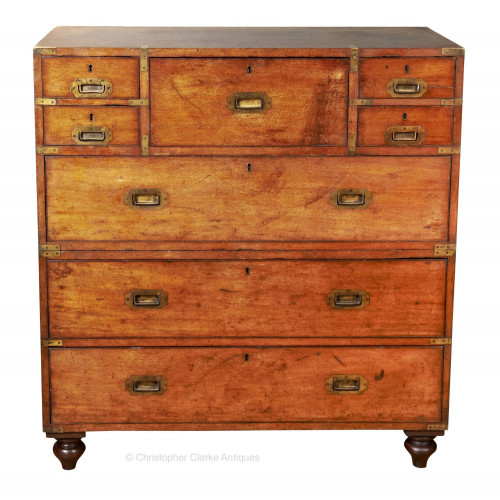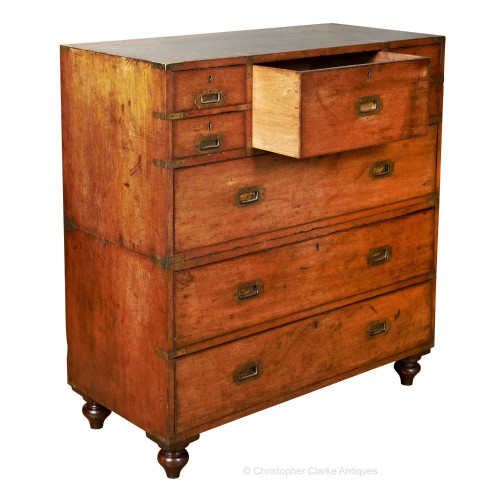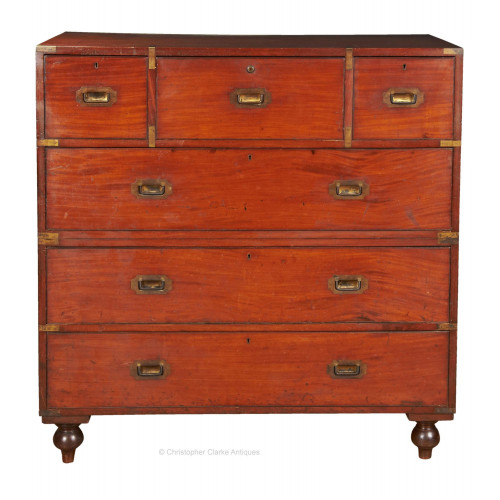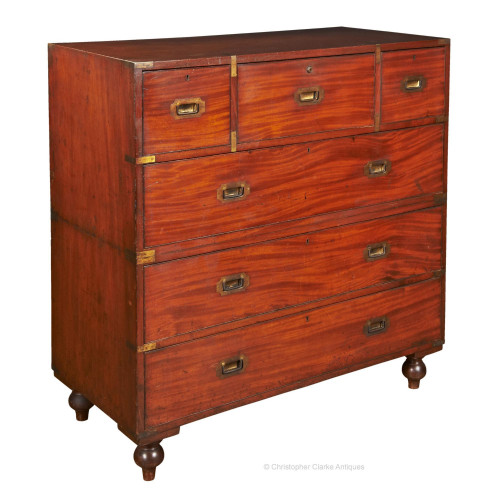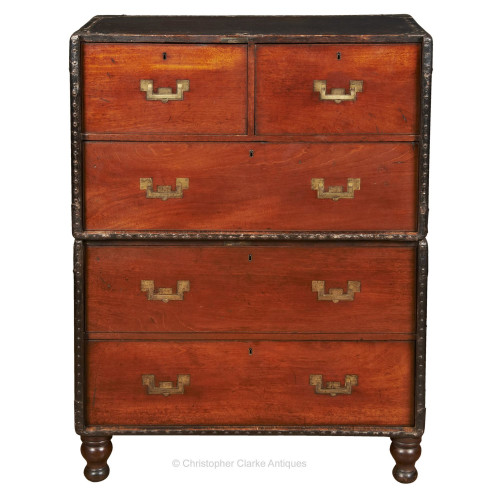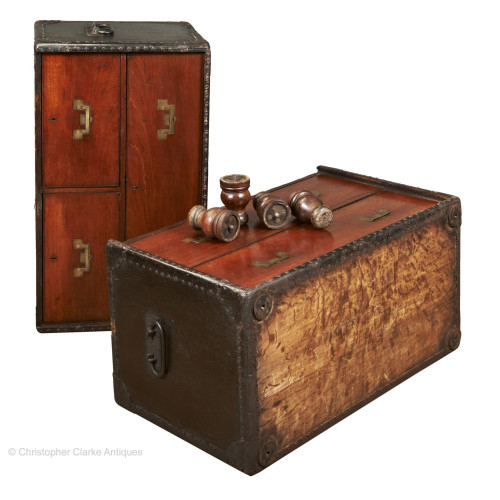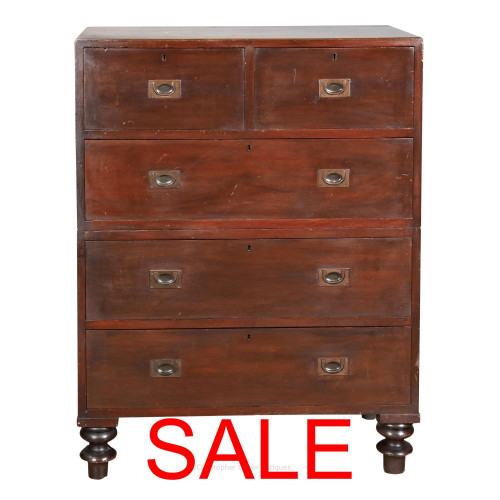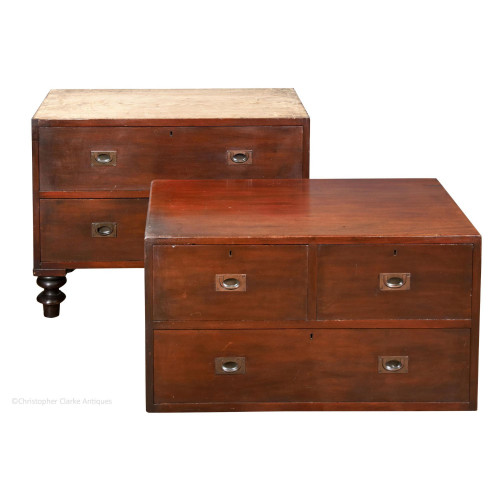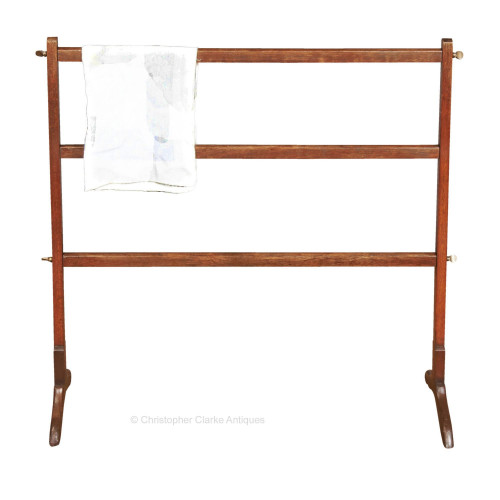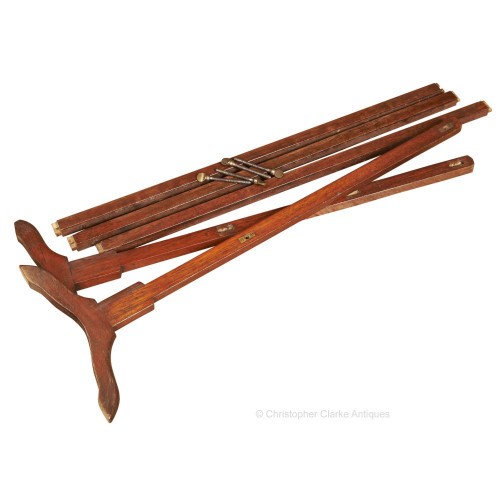Anglo Indian Campaign Chest
Anglo Indian Campaign Chest
83301
An Anglo-Indian teak campaign chest from the Goa / Malabar region.
The chest is made in two halves with a separate, replaced, plinth base. The cupboard doors have raised and fielded panels to both the exterior and interior. The exterior panels are also carved with darts to each corner. Behind the cupboard doors are drawers with brass skeletal campaign handles. The drawers are edged with an ebonized fillet of wood, which has faded in places. The tops and bottoms of the four doors are similarly edged. When first made, the contrast of the darker edging would have subtly lifted the chest.
The chest has brass straps with each corner also capped in brass. The eight corner caps to the top of the bottom and bottom of the top sections are fitted with rectangular lugs to the top and corresponding holes to the bottom to fix the two parts together for use. To the sides of the chest are brass carrying handles with shaped back plates. The top of the chest has evidence that it one had a removable gallery.
It is likely that this chest was made in the same workshops that made the Gen. George Mackenzie Steuart secretaire and the Three Part Anglo-Indian Chest shown in our archive and in our catalogue Furnishing The Empire. Many of the attributes are the same from the carrying handles and the brass ware to the cupboard doors and ebonized edging etc.
The chest was purchased from a decedent of Frederick William Richard Clement who was born on the 29th of May 1839. He passed out from a Cadet on the 15th of May 1857 as a Lieutenant in the Royal Engineers. Two years later he sailed to China for the Second Opium War and was awarded a medal with two clasps. On the 20th December 1866 he was promoted to Captain and then Major on 2nd December 1874. Lieutenant Colonel followed on the 1st of October 1881 and full Colonel four years later. After 30 years in the Army, he was retired by 1888. During his service he was in China, at Athlone, Ireland, Birmingham and St. Helena where he commanded the 7th Company of Royal Engineers as a Captain.
Without knowing the owner, we would date the chest as early to mid 19th century, which doesn't fit in with Clement's enlistment in 1857. This suggests that this form of chest was either made over quite a long period of time or Clement bought it second hand. It is possible that his ship stopped at Bombay on the way to China in 1859 and that he bought the chest at that point. Other possibilities are that he bought it from a retiring officer or perhaps at a battlefield auction.
The quality of the chest is in no doubt, as is that of the previous chests we have had from the same workshop. Mid 19th Century.
Dimensions:
Mid 19th Century
Teak
Anglo-Indian
Good. Plinth base and keys replaced. Removable gallery missing.
RELATED ITEMS









